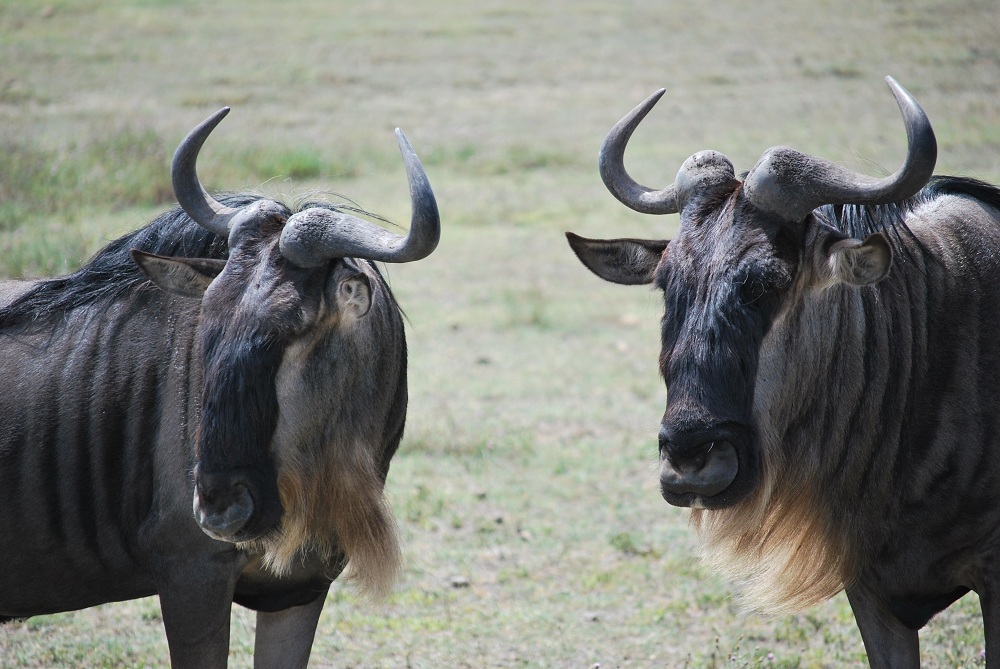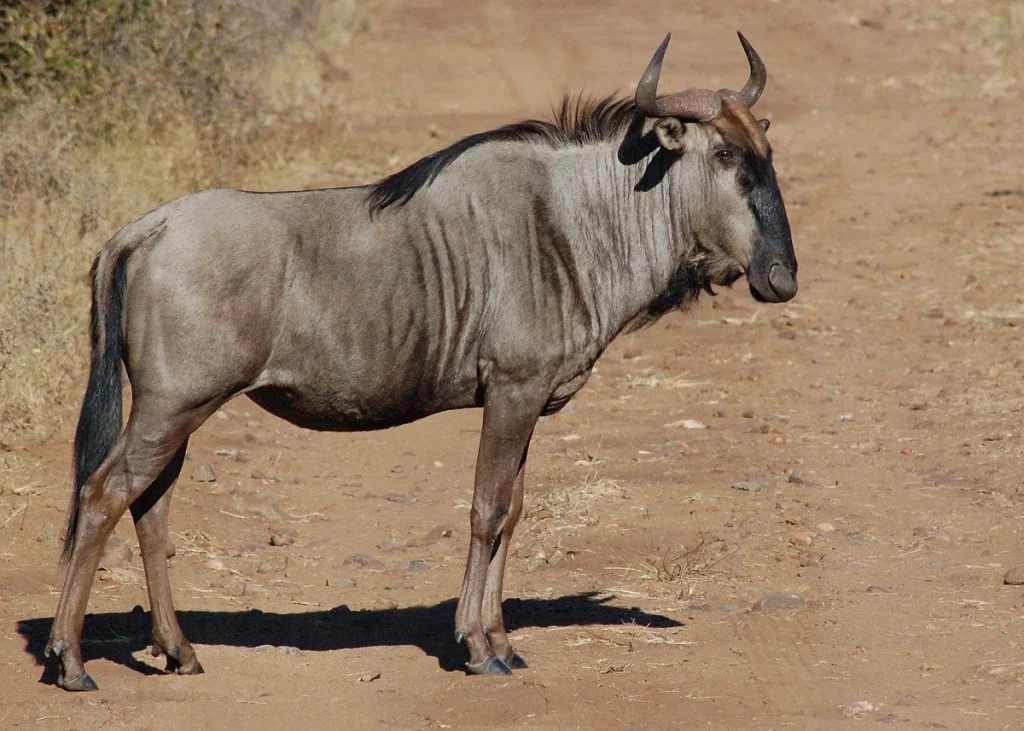Wildebeest: Facts, Size, Weight, Diet, Behaviors, and Habitats
Wildebeest: Facts, Size, Weight, Diet, Behaviors, and Habitats: What are wildebeest? – Also known as the gnu, the wildebeest is a member of the antelope family. They have a large, box-like head with curving horns.

Wildebeest.
Their hindquarters are slender and have spindly legs, whereas the front of their bodies are powerfully constructed. They have a gray coat, a black mane, and either a black or white beard. The wildebeest comes in various races. The western white-bearded wildebeest is the species that makes up the huge herds in Kenya and Tanzania’s Serengeti-Mara habitat, while the eastern white-bearded races live in Kenya and Tanzania east of the Gregory Rift. South of the Zambezi River is where you can find the blue or brindled race.
Wildebeest Facts
AMAZING FACTS ABOUT WILDEBEESTS
SCIENTIFIC NAME: CONNOCHAETES TAURINUS
LIFE SPAN: 20 YEARS IN THE WILD
GESTATION: 8.5 MONTHS
WEIGHT: 118 TO 270 KILOGRAMS (260-595 POUNDS)
HABITAT: OPEN WOODLANDS, OPEN GRASSY PLAINS
PREDATORS: LIONS, CHEETAHS, HUNTING DOGS, HYENAS
SIZE: 123 CENTIMETERS IN LENGTH (48 INCHES)
DIET: HERBIVOROUS
Challenges Faced by Wildebeest
- Habitat fragmentation poses a great threat to wildebeest: Fragmentation, which happens when land is cordoned off for agriculture, puts the environment in danger. Although they are common and plentiful in some areas, the development of agriculture and civilization, the depletion of water supplies, and poaching pose a threat to the survival of this iconic species.

Wildebeest.
Wildebeest Behaviors
- They are noisy creatures: Bulls can make a variety of loud noises, from moans to snorts that are extremely loud.
- The majority of female wildebeest give birth around the same time: In a two- to three-week period, almost 80% of the females give birth, which attracts more predators and increases the chance that more calves will survive the critical first few weeks.
Wildebeest Diet
- Wildebeest are driven by their appetites: These massive beasts are constantly moving in search of pasture and water sources. A fairly sizable migratory population makes up the well-known Serengeti wildebeest population. This group begins its annual migration shortly after the calving season at the beginning of the year, covering a distance of 800 to 1,610 kilometers (500 to 1,000 miles). Numerous people are hurt, killed, or lost in their unrelenting advance (particularly calf loss). The wildebeest practically run out of grazing pasture by the end of the dry season, so they retreat to the Serengeti plains as the rainy season starts.
Habitats: Where do wildebeest live?
The plains and acacia savannas of Eastern Africa are home to wildebeest.

